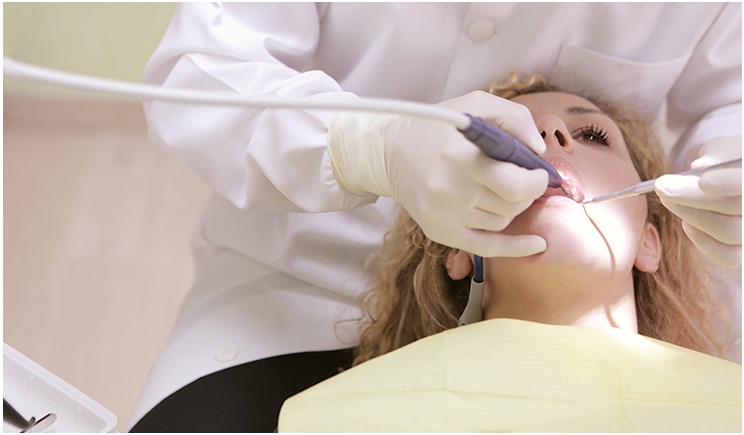
The US Bureau of Labor Statistics (BLS) reports that dentists earned a median pay of $164,010 last year with a per hour rate of $78.85. However, these figures encompass an incredible range, with substantial income gaps from state to state and region to region that likely will widen.
For example, dentists in many northwest and northeast states earned the top mean wage between $203,450 and $258,920, while dentists in some rural and Midwest states earned the bottom mean wage between $86,870 and $166,910.
Similarly, dentists in the top metropolitan areas saw annual mean wages surpassing $250,000, with the highest reported in the Dover-Durham area of New Hampshire and Maine at $286,540. Dentists in non-metropolitan areas did not do as well, however, with Southwest Maine seeing the most at $232,390 and no other regions breaking the $200,000 threshold.
Meanwhile, the pandemic may have sparked early retirements and ensuing relocations. But when we address its impact, it is short-sighted to limit the examination to 2020. We already were witnessing the longer-term effects of trends like the transfer of professional higher-earning patients and entire companies from one section of the country to another.
We also are seeing remarkably diverse employment impacts from state to state. Some states have been more successful in handling the pandemic—with more rapid reopening of businesses, schools, and government services—than others.
Further, many states incurred significant governmental expenses that later will be reflected in increased tax burdens, which will pressure more people to relocate. Many parents with school-aged children left states with closed schools to immigrate to states with open schools.
The pandemic also taught many skilled workers and their employers that it wasn’t necessary to warehouse personnel in high-cost urban settings. Many employees successfully performed their jobs remotely from home, often using video conferencing for face-to-face interaction with coworkers and clients. These workers benefitted from additional time with their families and reduced or eliminated commutes. Employers, meanwhile, benefitted from lower overhead costs.
The pandemic, then, wasn’t a single event that elicited short-term financial chaos. It was a catalyst that sped up inevitable social and economic change. Cities like San Francisco and New York have seen an exodus of residents and businesses, and rental costs per square foot are in decline. Other regions, meanwhile, have enjoyed a rapid influx of skilled people.
The federal government has infused billions of dollars into our economy in an attempt to alleviate the negative impact of the pandemic. In my opinion, this influx into the money supply comes too late, and it costs too much. The economy already has demonstrated strong indicators of recovery, and a humongous dump into the money supply seriously risks overheating the economy with inflation.
Additionally, the backward manner in which the states and feds handled unemployment compensation has meant that many unemployed workers have done better fiscally by staying at home instead of retaining their previous employment or getting a new job, while employers struggle to find workers. One should anticipate a related jump in wages, especially in service sector industries including dental team members. This also will add to inflationary pressures.
Regardless, money remains at historically cheap levels. The central bank not only purchased blue chip stocks during the pandemic, as it did during the 2007-2008 recession, but it also took a deep dive into the subprime bond market.
The private equity industry largely depends on financing mergers and acquisitions as well as de novo expansion on a plethora of junk bond issues. This definitely includes the dental support organization (DSO) industry.
As long as interest rates remain low and money is relatively cheap, the train will keep chugging along, even during times of quarterly earnings shortfalls. Low-cost borrowed money is the fuel that keeps the train moving down the track.
If and when the ugly head of inflation shows its face, the train can quickly derail. Will the Federal Reserve be able to swiftly right the train back on track? Or will investors, workers, and businesses suffer?
In fact, some argue a moderate degree of inflation is critical to bring down unemployment figures. Others argue that the Fed might utilize the tool of inflation to effectively reduce our growing national debt by paying back creditors with dollars of lesser valuation.
Economies have cycles, and those cycles have consequences. Simply because an economy has progressed in a similar fashion in recent history does not mean that the economy will stay the course into perpetuity.
Every entrepreneur in the dental industry, from sole-proprietor single-office dentists to private equity managers who hold one or more DSOs in their portfolio must be alert to macroeconomic change.
Dental salaries alone represent the highest operating expense of any clinic. That specific operational cost is subject to potential for wide fluctuations, some of which are beyond anyone’s immediate control. Stay alert. Keep your head on a swivel, and watch your six o’clock.
Dr. Davis practices general dentistry in Santa Fe, NM. He assists as an expert witness in dental fraud and malpractice legal cases. He currently chairs the Santa Fe District Dental Society Peer-Review Committee and serves as a state dental association member to its house of delegates. He extensively writes and lectures on related matters. He may be reached at mwdavisdds@comcast.net or smilesofsantafe.com.
Related Articles
What Dentists Earn: 2021 Edition
What Dental Hygienists Earn: 2021 Edition
The Medicaid Orthodontics Program Needs Fixing











